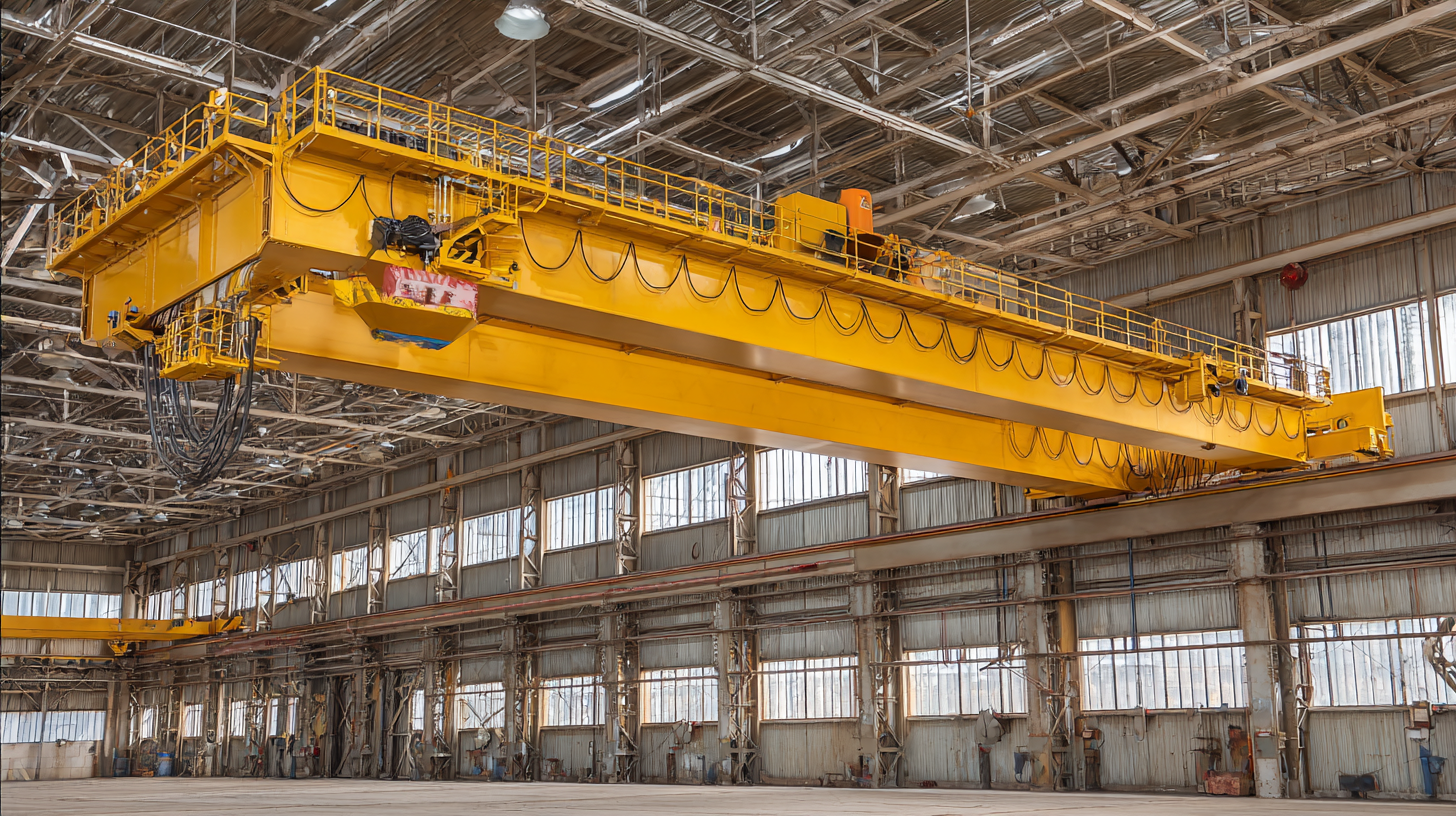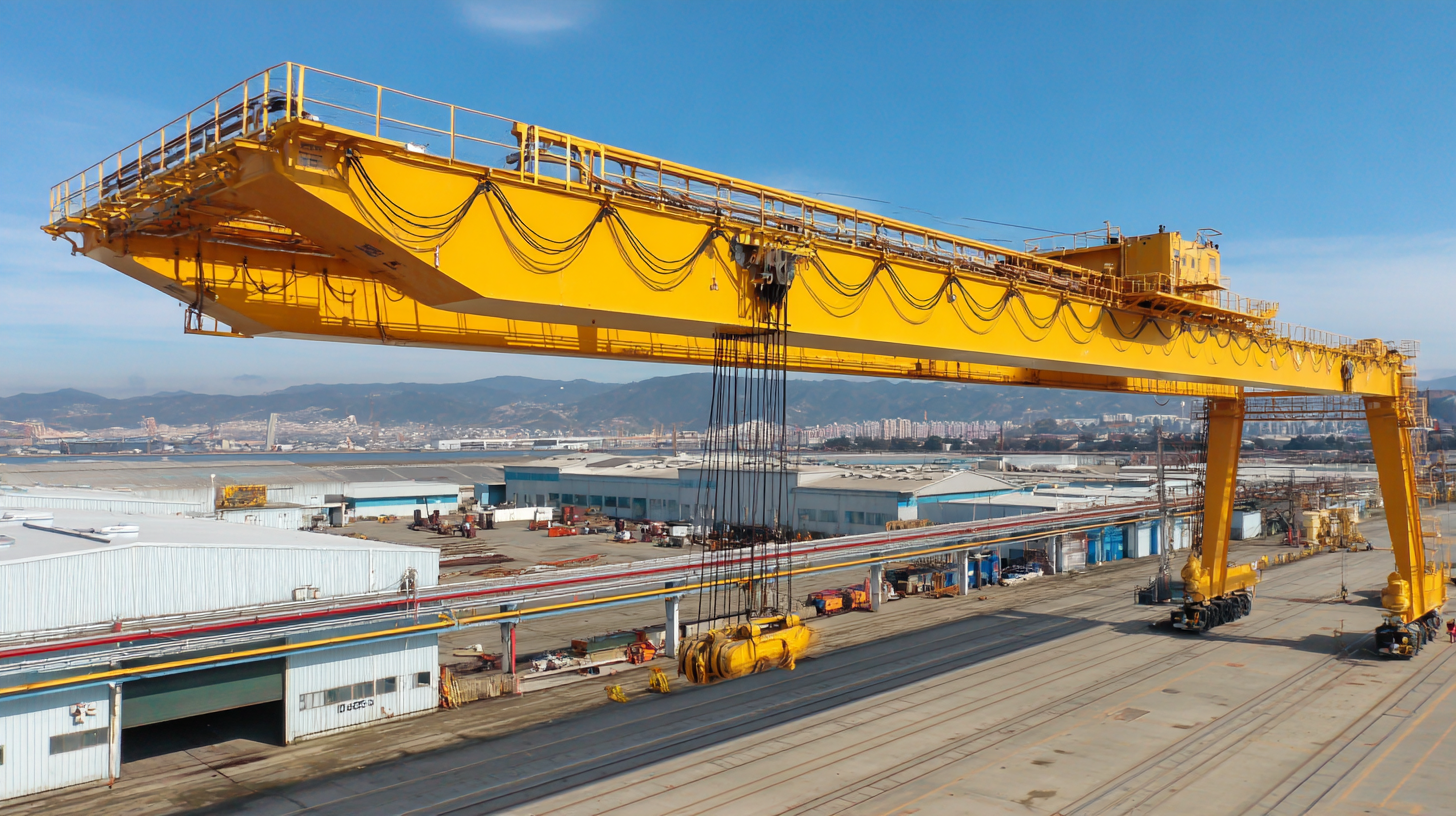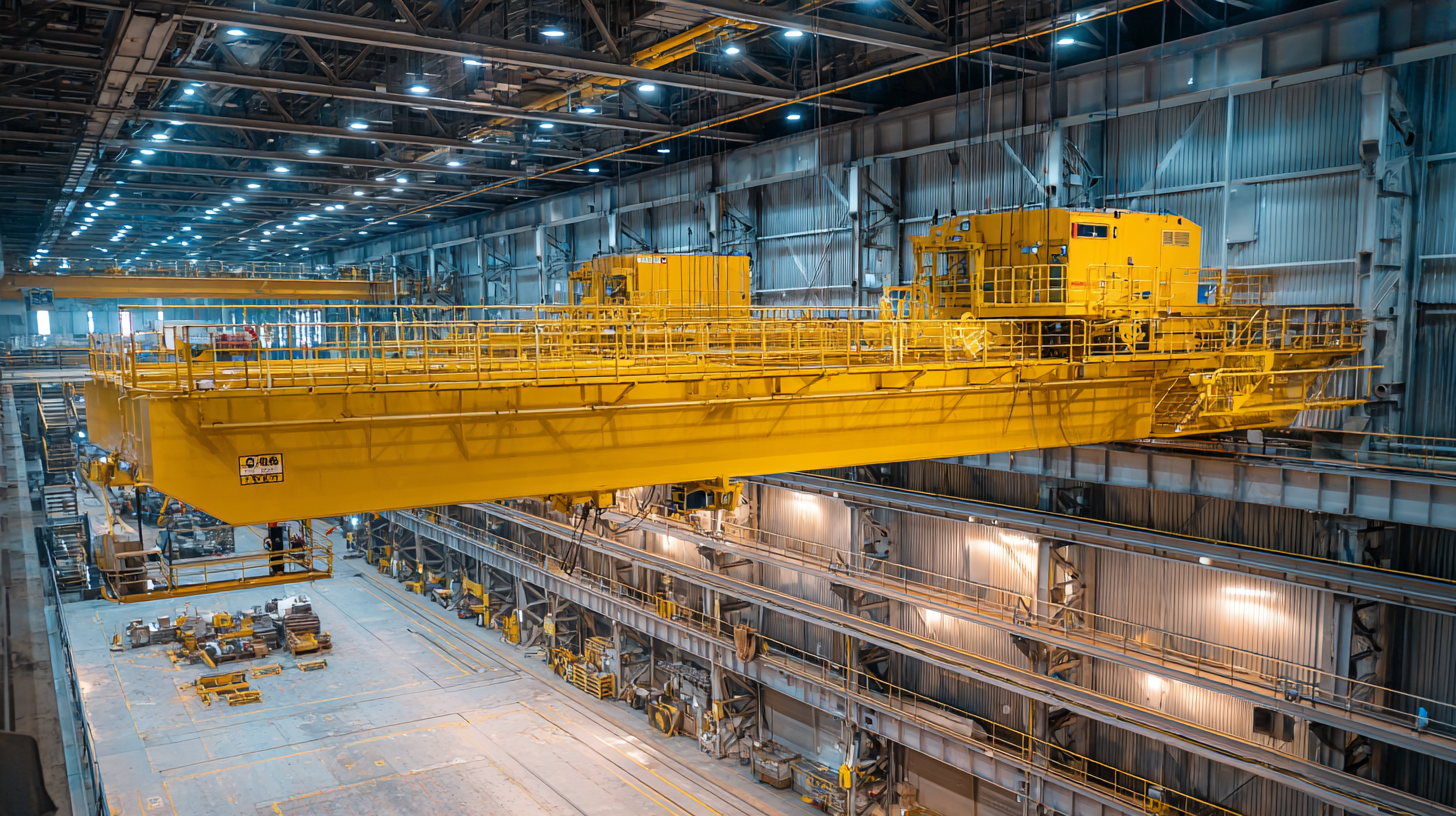Inquiry
Form loading...
-
Phone
-
Wechat

-
Whatsapp

In the rapidly evolving landscape of industrial equipment, the significance of adhering to global standards in Bridge Crane manufacturing cannot be overstated. According to a recent report by MarketsandMarkets, the global market for crane systems is projected to reach $45 billion by 2025, driven by escalating demand for efficient material handling solutions across sectors such as construction, manufacturing, and logistics. As the need for safety, reliability, and efficiency continues to rise, manufacturers are increasingly compelled to align their production processes with international quality specifications. Compliance with these rigorous standards is not just a regulatory necessity; it serves as a competitive differentiator in a crowded marketplace. In this blog, we will delve into the latest industry dynamics for 2025, exploring how these standards shape the future of Bridge Crane manufacturing and enhance operational excellence for end-users worldwide.

As we look towards 2025, the bridge crane manufacturing industry is on the brink of significant transformation driven by technological advancements and evolving market demands. Emerging trends include the increasing implementation of automation and robotics, allowing for enhanced efficiency and precision in operations. The integration of IoT (Internet of Things) technology is also paving the way for real-time data collection and monitoring, enabling manufacturers to optimize performance and predictive maintenance solutions.
Sustainability is another trend gaining momentum, with companies focusing on eco-friendly materials and practices to minimize their environmental footprint. Additionally, digital twin technology is making waves in warehouse management, allowing for virtual replicas of physical assets. This innovation enhances strategic planning and operational efficiency by enabling facility managers to simulate various scenarios. As the landscape of bridge crane manufacturing evolves, companies must stay attuned to these trends to remain competitive and meet the rising standards of quality and compliance.

Bridge cranes play a crucial role in enhancing operational efficiency across various industries, but to ensure their reliability and safety, adherence to key global quality specifications is imperative. According to the American National Standards Institute (ANSI), bridge cranes must meet minimum safety standards, including load capacity, stability, and operational controls. Compliance with these guidelines ensures that equipment can handle loads safely, mitigating risks associated with crane operations.
When selecting bridge cranes, companies should prioritize features that align with global standards. To illustrate, the ISO 9001 certification signifies a commitment to quality management processes, resulting in improved product consistency. Moreover, data from the International Material Handling Industry (IMHI) indicates that organizations adhering to these specifications report a 25% decrease in equipment-related accidents, showcasing the direct benefits of compliance.
Tips: Before purchasing, always request documented proof of compliance with industry standards from manufacturers. Regular safety audits and training for operators can also significantly enhance safety. Investing in models with advanced safety systems, such as overload detection and emergency stop functions, can further ensure operational integrity.
In the competitive landscape of bridge crane manufacturing, regulatory compliance is paramount for ensuring quality and safety. Adhering to standards set by organizations such as the American National Standards Institute (ANSI) and the Occupational Safety and Health Administration (OSHA) can significantly affect not only product integrity but also the manufacturer's reputation. According to a recent report from the Crane Manufacturers Association of America (CMAA), adherence to these regulations can reduce workplace accidents by up to 25%, underscoring the importance of compliance in production processes.
Manufacturers must pay close attention to both material specifications and operational guidelines. The adherence to ISO 9001 quality management principles ensures that companies maintain high standards throughout their manufacturing processes. Regular audits and quality assessments can help identify lapses in compliance before they escalate into major issues.
**Tips:** Ensure all staff is adequately trained on compliance standards and the importance of safety protocols. Regularly review the latest regulatory updates to stay informed about changes that could impact production. Additionally, investing in quality control systems can streamline processes and enhance adherence to industry regulations, leading to greater efficiency and reduced liability.

Digital innovations are revolutionizing bridge crane technology, enhancing both performance and safety for operators on-site. Traditionally, crane operations relied heavily on the presence and expertise of human operators. However, recent advancements have introduced new modes of operation that incorporate virtual twin experiences. These next-generation digital twins simulate real-time behavior, allowing for optimization in design and processes. By using data-driven insights, operators can now predict potential issues before they occur, significantly enhancing operational safety and performance efficiency.
Moreover, the integration of augmented reality (AR) and virtual reality (VR) into crane operations provides immersive training environments. These technologies allow operators to engage in realistic simulations, improving their understanding of crane functionalities and safety protocols without the risks associated with real-world operations. The incorporation of embedded visualizations in user interfaces further aids in real-time decision-making, providing operators with critical information that enhances their situational awareness. As the crane manufacturing industry moves towards these digital solutions, the standards for safety and operational efficiency are set to reach unprecedented levels.
| Specification | Quality Standard | Compliance Rate (%) | Safety Features | Digital Innovation |
|---|---|---|---|---|
| Load Capacity | ISO 9001:2015 | 95 | Overload Protection | Smart Load Monitoring |
| Span Width | EN 15011 | 90 | Emergency Stop System | IoT Connectivity |
| Lifting Speed | ANSI B30.2 | 92 | Anti-Collision System | Remote Operation |
| Power Supply | IEC 60204-32 | 93 | Ground Fault Protection | Energy Management Systems |
| Control System | ISO 13849 | 94 | Safety PLC | Artificial Intelligence Integration |
In the realm of bridge crane manufacturing, adhering to stringent quality standards is paramount. Best practices for ensuring compliance begin with a comprehensive understanding of international and local regulations that govern the industry. This involves not only familiarizing oneself with the necessary certifications and guidelines but also actively engaging with regulatory bodies. Manufacturers should conduct regular audits and assessments to ensure that their processes align with the evolving standards, thus reinforcing their dedication to safety and reliability.
Moreover, fostering a culture of quality within the organization is essential. Training programs that emphasize the importance of compliance at every operational level can empower employees to take ownership of their role in the manufacturing process. Utilizing advanced technologies such as automation and real-time monitoring systems can further enhance quality control measures. By investing in continuous improvement and innovation, manufacturers not only comply with established standards but can also achieve higher efficiency and customer satisfaction. Implementing these best practices positions companies as leaders in the competitive landscape of bridge crane manufacturing.
